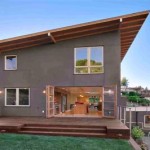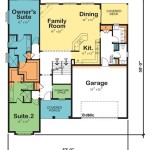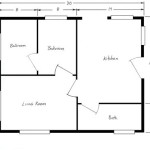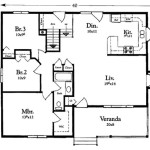```html
Small House Plans with Sunroom: Bringing the Outdoors In
The allure of a small house lies in its affordability, ease of maintenance, and often, its inherent charm. Combining this intimate lifestyle with the light-filled serenity of a sunroom creates a living space that is both efficient and restorative. Small house plans incorporating sunrooms offer homeowners the opportunity to maximize natural light, extend their living area, and connect with the outdoors, regardless of lot size or budget. This article explores the considerations involved in designing and building small house plans with sunrooms, focusing on strategic planning, design choices, and practical applications.
A sunroom, also known as a solarium, sun porch, or conservatory, is essentially a room designed to maximize exposure to sunlight. Traditionally enclosed with glass or similar transparent materials, sunrooms can range from simple screened-in porches to fully insulated, climate-controlled spaces that can be used year-round. In the context of a small house, a sunroom represents a significant opportunity to amplify the sense of space and brightness, making the entire home feel more airy and inviting.
Optimizing Space and Functionality
Integrating a sunroom into a small house plan demands careful consideration of space optimization. Every square foot must be thoughtfully planned to ensure functionality and avoid a cramped or cluttered feel. The sunroom's placement within the overall design is crucial. Ideally, it should connect seamlessly with the main living areas, creating a natural flow between indoor and outdoor spaces. Consider the orientation of the house relative to the sun. A south-facing sunroom will receive the most sunlight throughout the day, while an east-facing sunroom is ideal for morning light and may require shading in the afternoon.
The size of the sunroom should be proportional to the overall size of the house. A massive sunroom attached to a tiny house can feel unbalanced and overwhelming. Instead, opt for a well-proportioned space that complements the existing architecture. Even a small sunroom can significantly enhance the livability of a small house. Think about potential uses for the sunroom. Will it be a reading nook, a dining area, a home office, or a space for growing plants? Tailoring the design to its intended purpose will ensure that it is a valuable and frequently used part of the home.
Multifunctional furniture is essential in a small house with a sunroom. Consider furniture that can serve multiple purposes, such as a daybed that can be used for seating and sleeping, or a dining table that can double as a workspace. Built-in storage can also help to maximize space and keep the sunroom tidy. Vertical space should be utilized with shelving units or hanging planters to avoid cluttering the floor.
Design Considerations for Small House Sunrooms
The architectural design of the sunroom should complement the existing style of the small house. Whether the house is modern, traditional, or cottage-style, the sunroom should seamlessly integrate with the overall aesthetic. Consider the roofline, window styles, and exterior materials. A harmonious design will enhance the curb appeal of the house and create a cohesive look.
Window selection is a critical aspect of sunroom design. Large windows or glass doors are essential for maximizing sunlight and providing unobstructed views. However, energy efficiency is also a significant consideration. Opt for double-paned or triple-paned windows with low-E coatings to minimize heat gain in the summer and heat loss in the winter. Skylights can also be a great way to bring in natural light, but they should be strategically placed to avoid glare and overheating.
Ventilation is crucial for maintaining a comfortable temperature and preventing moisture buildup in the sunroom. Operable windows or vents can provide natural ventilation, while a ceiling fan can help to circulate air. In climates with extreme temperatures, a dedicated heating and cooling system may be necessary to ensure year-round usability. Consider a mini-split system, which is energy-efficient and can be easily installed in a small space.
The flooring in the sunroom should be durable, easy to clean, and able to withstand exposure to sunlight and moisture. Popular choices include tile, concrete, and outdoor-rated wood or composite decking. Consider using rugs or mats to add warmth and texture to the space. Furniture should be weather-resistant and comfortable. Outdoor furniture made of wicker, rattan, or aluminum is a good choice. Add cushions and pillows to create a cozy and inviting atmosphere.
Landscaping around the sunroom can further enhance the connection between indoor and outdoor spaces. Plant flowers, shrubs, or small trees to create a natural buffer between the sunroom and the surrounding landscape. Consider adding a small patio or deck outside the sunroom to extend the living area and provide a space for outdoor dining or relaxation. A water feature, such as a small fountain or pond, can add a sense of tranquility to the sunroom environment.
Practical Applications and Benefits
A sunroom in a small house offers a multitude of practical applications, enhancing the overall quality of life for its inhabitants. One of the most significant benefits is the increased natural light. Sunlight has been proven to improve mood, boost energy levels, and promote better sleep. A sunroom provides a dedicated space for soaking up the sun's rays, even on cloudy days.
A sunroom can also serve as a dedicated space for hobbies and leisure activities. It can be a perfect place for reading, painting, gardening, or simply relaxing. The natural light and connection to the outdoors can inspire creativity and promote a sense of well-being. A sunroom can also be used as a home office, providing a bright and airy workspace that is conducive to productivity.
For plant lovers, a sunroom is an ideal place to grow plants, especially those that require a lot of sunlight. It can be a mini-greenhouse, allowing homeowners to cultivate herbs, vegetables, and flowers year-round. The controlled environment of a sunroom can also protect delicate plants from harsh weather conditions. Even in colder climates, a heated sunroom can provide a sanctuary for tropical plants.
A sunroom can also increase the value of a small house. It is a desirable feature that can appeal to potential buyers. A well-designed and well-maintained sunroom can add significant value to the property, making it a worthwhile investment. When planning a sunroom addition, consider its potential impact on resale value and choose materials and designs that are likely to appeal to a wide range of buyers.
Integrating a sunroom into a small house plan requires careful planning and thoughtful design. By optimizing space, choosing appropriate materials, and considering the practical applications of the space, homeowners can create a living environment that is both functional and aesthetically pleasing. The benefits of a sunroom, including increased natural light, enhanced connection to the outdoors, and improved overall well-being, make it a valuable addition to any small house.
```
House Plans With Sunrooms Or 4 Season Rooms

House Plans With Sunrooms Or 4 Season Rooms
.webp?strip=all)
One Story Home Plan With Sunroom 4746

House Plans With Solarium Or Sun Room Drummond

House Plans With Solarium Or Sun Room Drummond

House Plans With Solarium Or Sun Room Drummond

House Plans With Solarium Or Sun Room Drummond

Unique Layout Make Porch Into Sunroom It Smaller So Will Kitchen Bigger 1300 Sq Ft Southern Living Small Cottage Plans Plan House

One Story Home Plan With Sunroom 4746

House Plans With Solarium Or Sun Room Drummond








